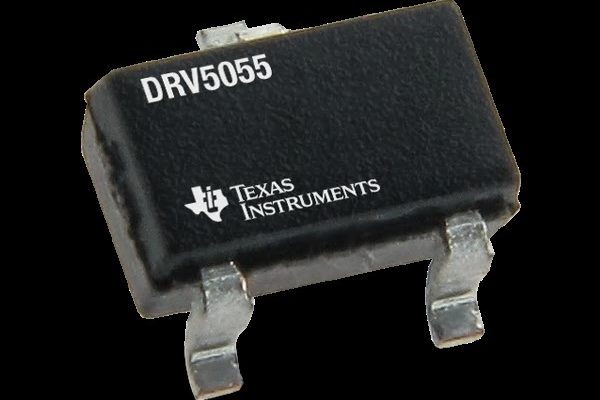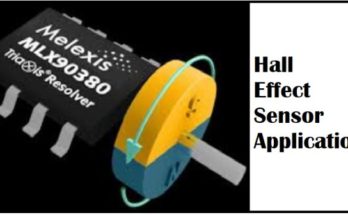TI’s DRV5055 Linear Hall Effect Sensor measures the strength of the magnetic field and give a linear voltage output proportional to the measured magnetic flux density. In order to reduce the error in the measurement responding to the power supply fluctuations, the sensor is designed to have a ratiometric architecture. The sensor accuracy is further improved by incorporating a built-in temperature compensation to eliminate the drift of magnetic field due to temperature change. The functional block diagram is shown below.
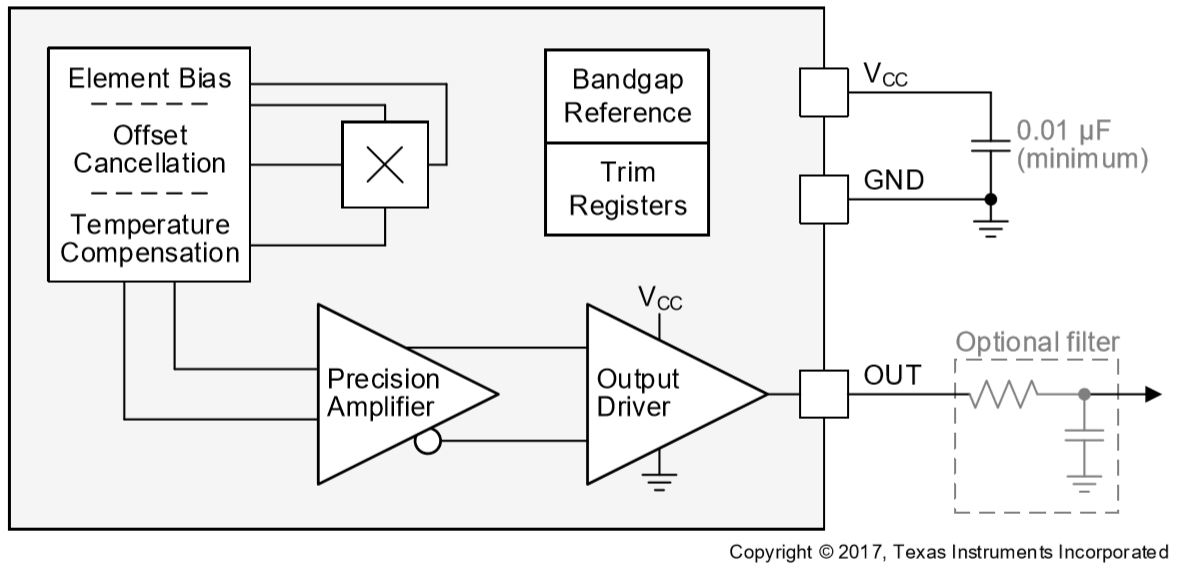
The DRV5055 Ratiometric Hall Effect Sensor can be supplied by 3.3V or 5V power sources to make it compatible with most microcontroller systems. The output voltage of the sensor is right at VCC/2 when there is no magnetic field is applied. The output changes linearly with the magnetic flux density as shown in the below plot of Magnetic Response to magnetic flux density. The North and South poles of the magnet generate different voltages, which makes the sensor capable of detecting magnetic field directions.
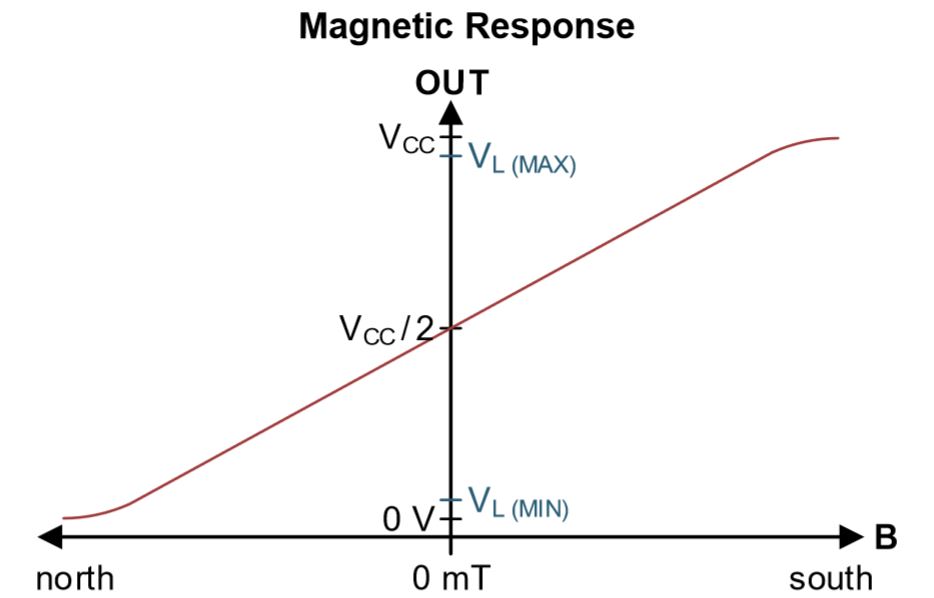
The following diagrams show the concepts of magnetic flux direction with respect to the device orientations for its two package options, SOT-23 and TO-92 respectively.
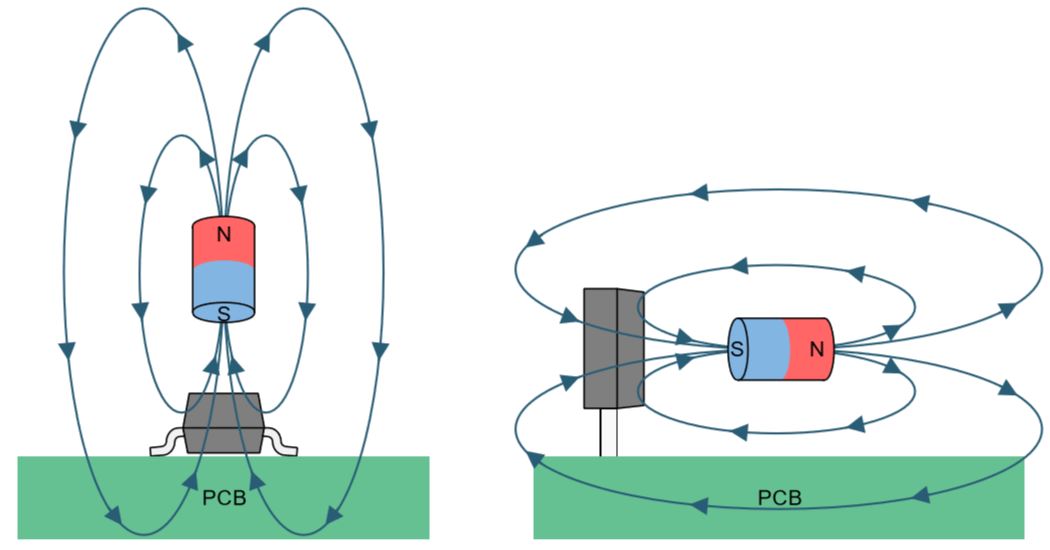
The DRV5055 series of Hall Effect Sensors offer four options of gains/sensitivity selections and magnetic field ranges depending on the device and supply voltage selected.

Applications of DRV5055:
- Position Sensing;
- Automatic Controls;
- Robotics;
- Home appliances;
- Gaming controls;
- Fluid level detection;
- Tilt detection;
- Fluid flow rate measurement;
- Absolute angle measurement;
- Current sensing;
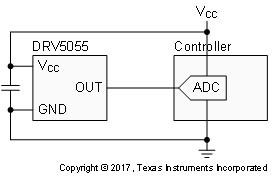
Read more at: http://www.ti.com/product/drv5055
Also at: https://www.mouser.com/new/sensors/ti-drv5055-hall-effect-sensor/n-5gejZ1p3x4c

